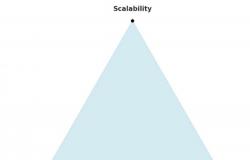Introduction
Blockchain technology has evolved from a niche innovation powering Bitcoin into a transformative infrastructure supporting global financial systems, supply chains, healthcare records, and digital identity frameworks. This comprehensive guide explains blockchain fundamentals, technical architecture, consensus mechanisms, and real-world applications that demonstrate why this technology is reshaping how we store, verify, and exchange information in the digital age.
What is Blockchain? Core Definition
A blockchain is a distributed, immutable ledger that records transactions across a network of computers (nodes) in a way that makes it nearly impossible to alter, hack, or cheat the system. Unlike traditional databases controlled by central authorities, blockchains distribute control across all network participants, eliminating single points of failure and intermediary dependencies.

The term "blockchain" derives from its structure: transactions are grouped into "blocks" that are cryptographically linked in chronological order, forming a "chain." Each new block contains a cryptographic hash of the previous block, transaction data, and a timestamp, creating an unalterable historical record.
Key Characteristics of Blockchain Technology
Decentralization: No single entity controls the network. Instead, distributed nodes validate and record transactions through consensus mechanisms, eliminating the need for trusted intermediaries like banks or governments.
Immutability: Once data is written to a blockchain, it becomes extremely difficult to alter. Changing a single block would require recalculating all subsequent blocks' cryptographic hashes and achieving consensus from the majority of network nodes—computationally infeasible for well-established blockchains.
Transparency: All network participants can view the complete transaction history (though user identities may be pseudonymous). This transparency enables unprecedented auditability while maintaining user privacy through cryptographic techniques.
Security: Cryptographic techniques including hash functions, digital signatures, and public-key cryptography ensure transaction authenticity and data integrity. The distributed nature makes blockchains highly resistant to attacks requiring compromising majority network control.
How Blockchain Works: Technical Overview
Transaction Initiation: A user initiates a transaction (e.g., sending cryptocurrency, recording data) using their private key to create a digital signature proving ownership without revealing the key itself.
Transaction Broadcasting: The signed transaction is broadcast to all network nodes, which verify the signature's validity and that the sender possesses sufficient assets to complete the transaction.
Transaction Pool: Valid transactions enter a "mempool" where they await inclusion in the next block. Miners or validators select transactions from this pool, typically prioritizing those with higher fees.
Block Creation: In proof-of-work systems, miners compete to solve complex computational puzzles to create new blocks. In proof-of-stake systems, validators are selected based on their stake holdings to propose new blocks.
Block Validation: Once a new block is created, network nodes verify all contained transactions and the block's validity according to consensus rules. Valid blocks are added to each node's copy of the blockchain.
Chain Extension: The new block becomes part of the permanent record, and its cryptographic hash is incorporated into the next block, creating the chain linkage that makes historical alteration impractical.
Consensus Mechanisms: How Networks Agree
Proof of Work (PoW): Miners compete to solve computational puzzles requiring significant energy expenditure. Bitcoin and (formerly) Ethereum use PoW, which provides security through economic costs of attack but consumes substantial electricity.
Proof of Stake (PoS): Validators are selected to create new blocks based on their cryptocurrency holdings (stake). Ethereum's transition to PoS in 2022 reduced energy consumption by 99.95% while maintaining security through economic penalties for malicious behavior.
Delegated Proof of Stake (DPoS): Token holders vote for a small number of delegates who validate transactions and create blocks. Systems like EOS and Tron use DPoS for higher throughput but with some centralization trade-offs.
Practical Byzantine Fault Tolerance (PBFT): Nodes communicate to reach consensus even if some are faulty or malicious. Hyperledger Fabric uses PBFT variants for enterprise blockchain applications prioritizing speed over maximum decentralization.
Types of Blockchain Networks
Public Blockchains: Open networks anyone can join, read, and participate in validation. Bitcoin, Ethereum, and Solana are public blockchains offering maximum decentralization and censorship resistance but facing scalability challenges.
Private Blockchains: Permissioned networks where access is restricted to authorized participants. Enterprises use private blockchains for supply chain management and internal record-keeping, sacrificing decentralization for privacy and performance.
Consortium Blockchains: Semi-decentralized networks controlled by a group of organizations rather than a single entity. Banking consortia like R3 Corda enable inter-institutional collaboration while maintaining controlled access.
Hybrid Blockchains: Combinations of public and private elements, allowing organizations to maintain private data while anchoring critical records to public chains for verification. Enterprise solutions increasingly adopt hybrid architectures.
Real-World Applications in 2025
Financial Services: Cross-border payments settle in seconds rather than days through blockchain networks like Ripple and Stellar. JPMorgan's JPM Coin processes $1.2 billion daily in institutional transactions, demonstrating blockchain's capacity to transform traditional banking.
Supply Chain Management: Walmart's Food Trust tracks $42 billion annually in food products, reducing contamination tracing from 7 days to 2.2 seconds. Maersk's TradeLens digitizes 68% of global shipping documentation, eliminating billions in paperwork costs.
Healthcare: Estonia's national health information exchange uses blockchain to secure 1.3 million citizens' medical records, ensuring data integrity while enabling patient-controlled access permissions.
Digital Identity: Microsoft's ION network built on Bitcoin enables decentralized identifiers allowing individuals to control their digital identities without relying on centralized authorities like Facebook or Google.
NFTs and Digital Ownership: Blockchain enables provable ownership of digital assets, with $8.5 billion in NFT trading volume in Q3 2025 demonstrating demand for verifiable digital property rights.
Voting Systems: West Virginia piloted blockchain-based mobile voting for military personnel in 2018, with several countries exploring similar systems to enhance election security and accessibility.
Benefits of Blockchain Technology
Reduced Intermediaries: Direct peer-to-peer transactions eliminate middlemen, reducing costs and settlement times. International remittances that traditionally took 3-5 days now settle in minutes with 67% lower fees.
Enhanced Security: Cryptographic protection and distributed architecture make blockchains highly resistant to fraud and unauthorized manipulation. The Bitcoin network has operated continuously without security breach since 2009.
Improved Transparency: Immutable audit trails enable unprecedented transparency in supply chains, financial transactions, and government operations, reducing corruption and increasing accountability.
Programmability: Smart contracts enable automatic execution of agreements when predefined conditions are met, eliminating manual enforcement and reducing disputes.
Challenges and Limitations
Scalability: Bitcoin processes 7 transactions per second, Ethereum approximately 30 TPS—far below Visa's 24,000 TPS capacity. Layer-2 solutions and newer blockchains address this limitation but remain developing technologies.
Energy Consumption: Proof-of-work blockchains like Bitcoin consume approximately 150 TWh annually, comparable to countries like Argentina. Proof-of-stake reduces consumption by 99%+ but remains limited in adoption.
Regulatory Uncertainty: Evolving regulations create compliance challenges for blockchain applications, particularly in financial services where legal frameworks lag technological capabilities.
Irreversibility: Transaction permanence, while valuable for security, creates problems when errors occur or private keys are lost, as demonstrated by billions in lost cryptocurrency.
The Future of Blockchain in 2025 and Beyond
Blockchain technology is transitioning from experimental implementations to production infrastructure underpinning critical systems. Trends include increased interoperability between chains, integration with artificial intelligence and Internet of Things devices, and mainstream adoption through user-friendly interfaces hiding technical complexity. As regulatory frameworks mature and scalability solutions deploy, blockchain's role in digital infrastructure will expand from niche applications to foundational technology comparable to the internet itself.
Conclusion
Blockchain represents a paradigm shift from centralized data control to distributed consensus systems, offering unprecedented security, transparency, and disintermediation. While challenges around scalability, energy efficiency, and regulation persist, ongoing innovation addresses these limitations. Understanding blockchain fundamentals is increasingly essential as this technology reshapes finance, supply chains, identity management, and digital ownership. Whether as an investor, developer, business leader, or informed citizen, blockchain literacy will be crucial for navigating the digital economy's evolution in the coming decade.






